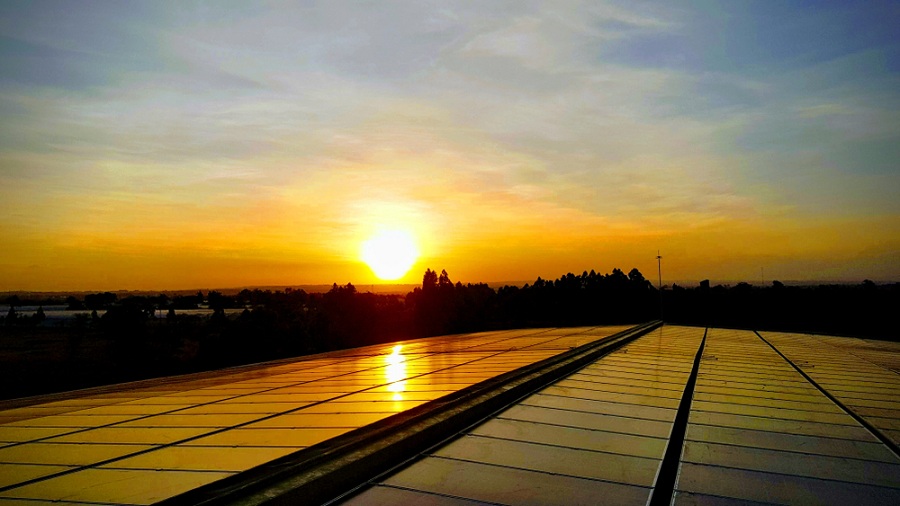The sunlight a solar panel needs depends on your panel's size and efficiency and how much power you want to generate. The more sun you have, the less you need to make up for it with panels.
To determine how much sunlight a solar panel needs, it's helpful to understand how solar cells work.
How Solar Panels Generate Power
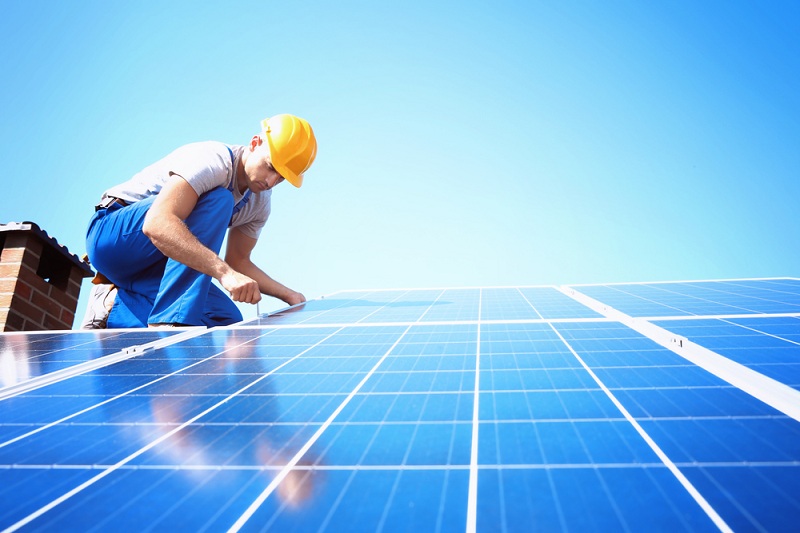
Sunlight passes through the glass of a solar panel and hits the solar cells inside. This causes electrons within the solar cells to jump from one atom to another, releasing energy.
This energy is stored in batteries and used later to power devices such as lights, computers, and appliances.
Main Factors Driving The Power Output Of Solar Panel
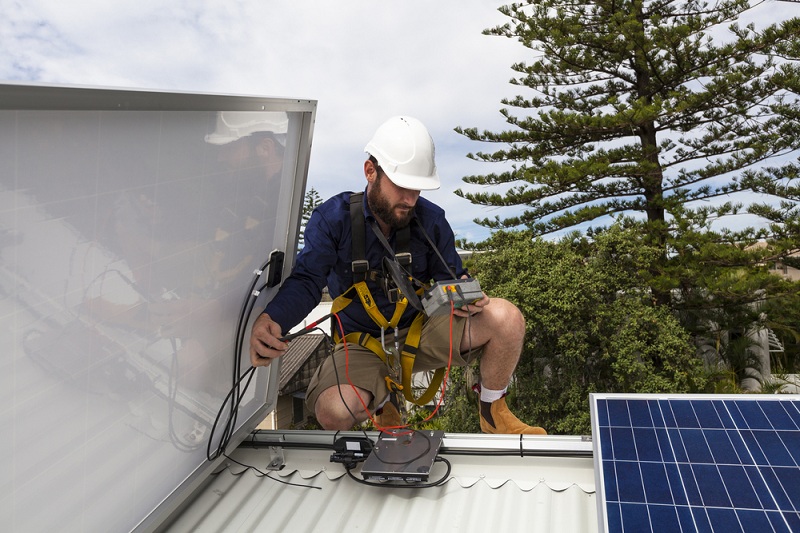
The above calculations assume that all the sunlight hitting the solar panel is converted into electricity. However, 3 main factors can affect the conversion rate of sunlight into electricity.
Angle of Attack: Angle of attack refers to the angle between the incoming light rays and the solar cell's surface. The more direct the sunlight, the more power a solar panel can produce.
Time of Day: As the sun moves across the sky during the course of a day, its position relative to the earth changes and the amount of power reaching solar panels changes.
Weather Conditions: The intensity of sunlight varies depending on the weather. Rain, fog, clouds, and snow all reduce the amount of sunlight reaching your panels.
The Importance of Angle Of Attack
The power output of a solar panel increases as the angle of attack improves.
When the angle of attack is too low or too high, the solar cell absorbs less energy from the sun, reducing its power output.
However, the power output of the solar panel does not increase linearly. Instead, the curve is U-shaped. This means that the power output reaches a maximum value at an intermediate angle of attack.
The reason why the power output of the panel reaches a maximum value at a certain angle of attack is due to the way the solar cells absorb photons.
If you want to maximize the power output of your solar panel, you should aim your solar panels toward the equator.
For Example, if you live in California, you should place your solar panels facing south or southeast.
In North America, it is generally best to position your solar panels on a roof facing true south at a 30- to 45-degree angle of attack. This delivers the best balance between energy output and cost.
How The Power Output Of A Solar Panel Varies With Time Of Day
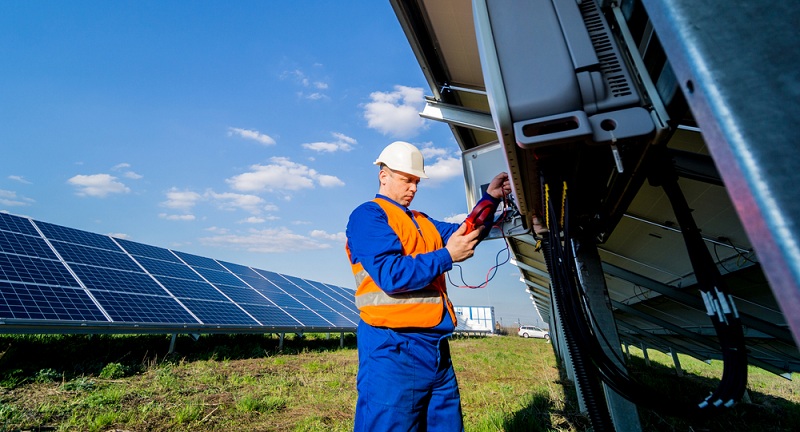
The amount of sunlight received by the solar panel depends on the time of day.
The sun is at its highest point in the sky during the middle of the day. At this time, the solar cell receives the most direct sunlight.
In contrast, the solar cell receives less direct sunlight when the sun is lower in the sky.
This is why when designing a solar panel system, most installers base the number of panels needed on getting just 4-6 hours of direct sunlight per day.
Find your reliable Solar Hours per Day using this map provided by the US Dept of Energy:
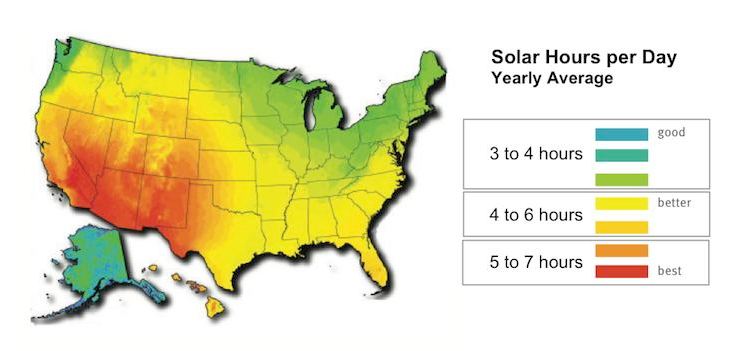
The following table lists the solar hours per day in the biggest cities in each state of the USA and the number of kWh of energy produced in a day from one 1kW solar panel array (19% efficiency).
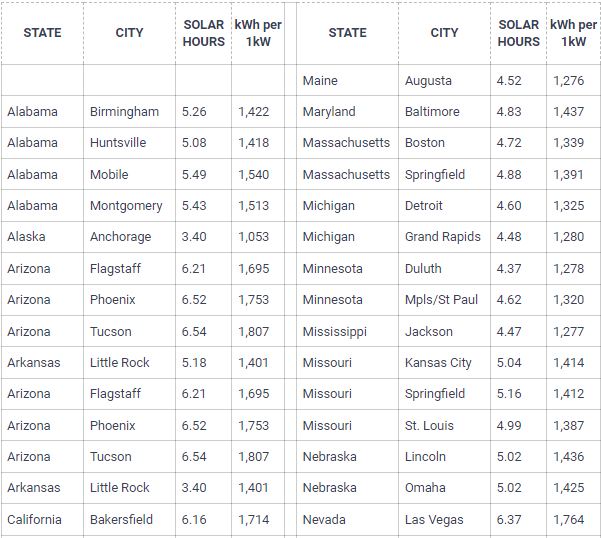
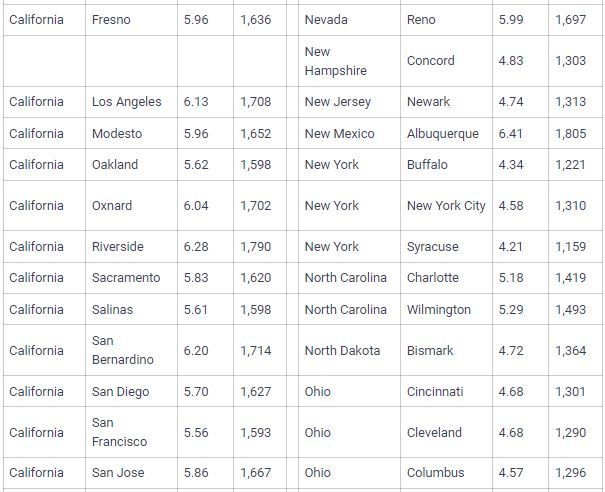
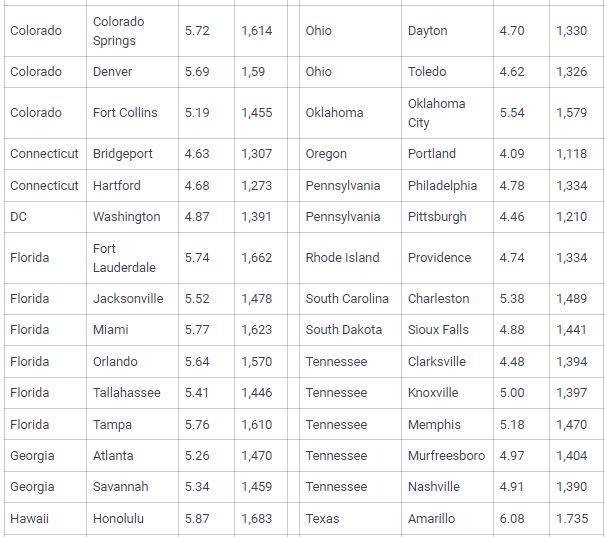
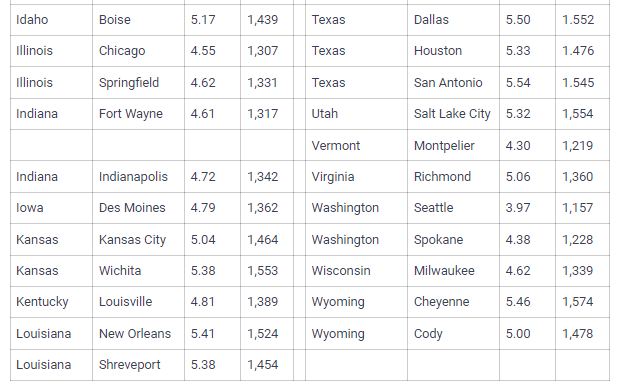
The table uses PV Watts calculations for each location using these input standards:
How The Power Output Of Solar Panel Varies With Weather Conditions
Clouds reduce the amount of sunlight reaching the ground. Therefore, cloudy days result in less power output from solar panels.
Rain, fog, and snow similarly impact solar power output.
For example, if you live in San Francisco, you may find that foggy days produce only half the power output of sunny days. This is because the fog diffuses and blocks some of the sunlight.

